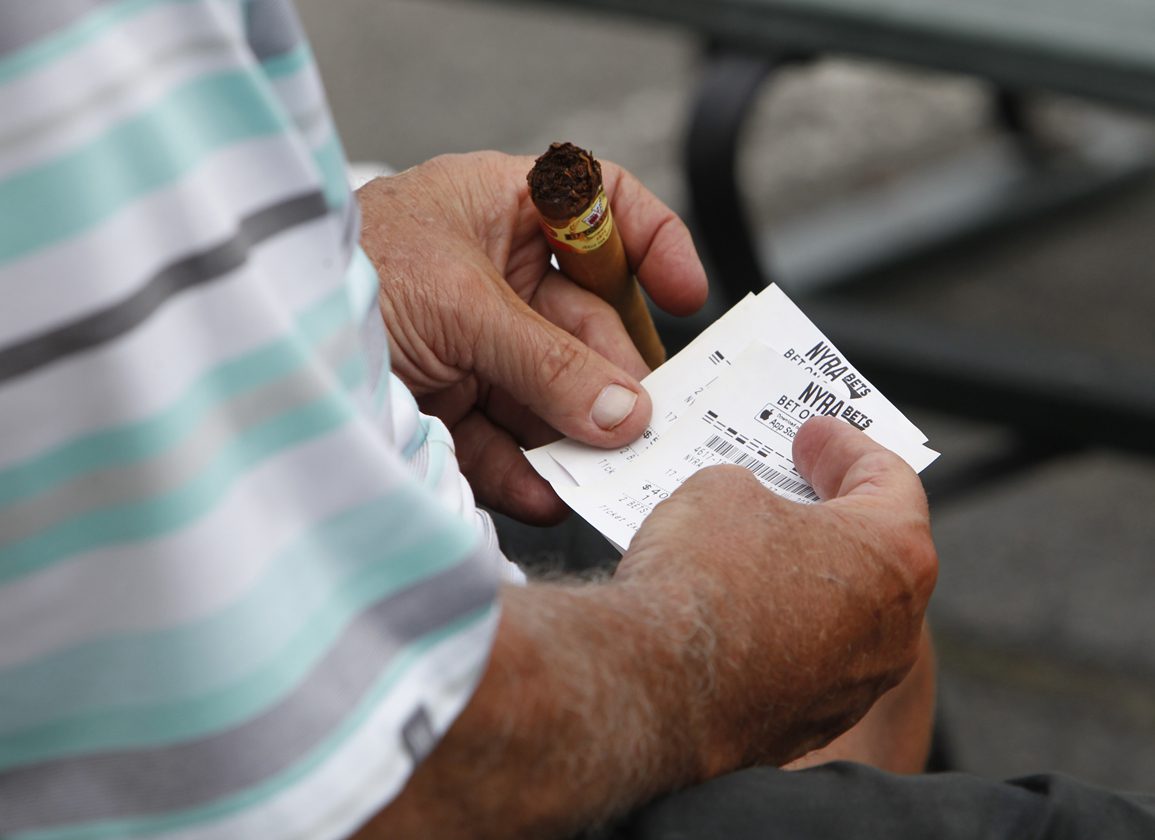By T. D. Thornton
When the .69-to-1 favorite returned $3.38 to win at Ellis Park in the first race on July 15, the to-the-penny payoffs represented a massively positive paradigm shift for horseplayers. Under a new Kentucky law that eliminates dime breakage at the state's tracks, bettors will no longer be subject to the disadvantageous, industry-wide practice of down-rounding that, in the above instance, would have sliced the return on that winning $2 wager to $3.20.
Yes, penny breakage looks a bit odd to the eye. But getting used to the concept will be worth it.
The Thoroughbred Idea Foundation (TIF), which spent four years championing this cause and advocating for any industry entity to make the change, estimates breakage at roughly 0.45% of the nation's total handle.
“That suggests breakage totals at least $50 million per year,” a 2018 TIF study reported, explaining that instead of being retained by tracks, states, or purse accounts, the rightful return of that money to bettors has the potential to generate additional wagering. “We estimate the betting churn from breakage to total at least an additional $200 million in annual handle.”
Those increases could nudge even higher if place and show betting suddenly become more attractive (because the returns on those bets will be greater, percentage-wise). In America's competitive wagering landscape, you'd think that other racing jurisdictions would be quick to follow Kentucky's lead.
There's only one misconception about Kentucky's laudable move to penny breakage: It's not a “first” as has been widely publicized.
In fact, Kentucky itself was among a handful of states that mandated penny breakage nearly a century ago, when pari-mutuels first began replacing on-track bookmakers.
In 1927, Kentucky and Maryland were the two only states with legalized pari-mutuels. The takeout rate for both states (in an era when only win-place-show betting existed) was 5%, with dime breakage.
Pari-mutuel machines were in use in other states despite not being explicitly sanctioned. In such cases, the public had zero knowledge of how much takeout and breakage were being raked out of the pools.
“In other states the amount of the percentage depends entirely on the greed of the pari-mutuel officials,” wrote nationally syndicated newspaper columnist Frank G. Menke in 1927. “How much was deducted in Florida last winter by each of the tracks is not publicly known. [One track] is purported to have apportioned 20% for itself, [another] 25%.”
Such aggressive pool-scraping, Menke further reported, was exacerbated by the all-too-common practice of track officials literally grabbing money out of the tills and pocketing it before it showed up in the mutuel calculations. At one Canadian track, he wrote, mutuels officials made a $10,000 error one afternoon by overpaying bettors. It simply made up the difference the very next day by upping the takeout and liberally rounding down the breakage.
“If such an act is not deliberate theft, then what is theft?” Menke asked rhetorically.
When Illinois codified its new mutuels law that went into effect July 1, 1927, it tweaked the percentages that were standard in Kentucky and Maryland. It set the takeout higher (6.5%), but mandated penny instead of dime breakage.
Half a year later, the Louisiana Jockey Club also saw merit in abandoning dime breakage, and the issue was a big enough deal that the New York Times reported on it. Starting Jan. 2, 1928, the Fair Grounds swapped out a 4% takeout and dime breakage and replaced it with a 6.5% take and penny breakage.
Louisiana officials calculated that bettors would receive “the same net return” under the penny breakage system. But their belief was that the betting pools would be more secure because the change “would render impossible any charge or insinuation that the mutuel calculations have been juggled via the amount of the breakage to return on winning certificates a smaller amount than would otherwise have been the case.”
It didn't take long after that for Kentucky to revisit how its tracks calculated breakage.
A front-page story in the Mar. 17, 1928, edition of the Lexington Herald proclaimed that, “The penny promises to come to prominence on Kentucky race courses during the coming season. At the meeting of the state racing commission here yesterday, a rule was introduced whereby breakage in the pari-mutuels shall be to the penny.”
At that time, Kentucky staggered its takeouts based on a two-tiered system that took into account the population base around each track. Churchill Downs and Latonia (now Turfway Park) in the more populated parts of the state went from a 5% takeout to 6.5%. The more rurally located tracks at Lexington, Raceland, and Dade Park (now Ellis Park) went from 7% takeouts to 10%.
“The new rule favors the players slightly,” the Herald reported.
Yet penny breakage remained the norm in those three states for only a relatively brief window of time. The Great Depression was a major factor in quashing the concept.
As finances became tighter, some tracks in the penny- breakage states went out of business entirely. Others pleaded with state regulators for permission to start chipping away at the winnings of horseplayers by raising takeout rates and restoring dime breakage so tracks could retain more rounded-down money. When new states began embracing pari-mutuels as a form of “sin taxes” to raise revenues, they wrote laws stipulating dime breakage, which once again became established as an industry standard.
Barely three months after the huge stock market crash of 1929, the Fair Grounds did away with penny breakage to start its 1930 winter meet. In 1934, Kentucky went to a 10% statewide takeout and back to dime breakage at the request of its track operators. Illinois also abandoned penny breakage.
It's interesting to note that when penny breakage first came into vogue in 1927 and '28, the idea made national headlines. When breakage reverted to dimes, newspapers rarely reported on it.
Writing in 1937 about Fairmount Park, the St. Louis Post-Dispatch reported that, “When the [1927] mutuel bill went into effect, the property immediately became a dead loss. It will be different now,” the article said, with takeout set at 9% and dime breakage once again a windfall for the track.
In 1938, penny breakage briefly resurfaced at Rockingham Park as the result of an oddball standoff between the New Hampshire racing commission and “Uncle” Lou Smith, the track's owner.
The New Hampshire attorney general had ruled that, unlike mutuels calculations in other states, Rock could not deduct its dime breakage until it had multiplied a bettor's winnings on a dollar by the number of dollars wagered.
Smith told the New York Times that such a rule “discriminated against the $2 bettors” who comprised 84% of Rockingham's patronage and provided 55% of the handle.
“We are faced with the alternative of closing our track or giving up the entire breakage to avoid discrimination against the $2 bettor,” Smith said. “We voluntarily choose to give up the breakage,” relying on revenue solely from the track's cut of the 10% takeout.
This required the Rock money room to have 220,000 pennies on hand each day to make exact change. The stalemate was resolved in time for the 1939 summer meet, which opened with a takeout hike to 11% and breakage reverting back to a dime.
New York's racing commissioners advocated for penny breakage when legalizing mutuels there in 1940, but they had to settle for nickel breakage (still a significant improvement over a dime). “The general public pays little attention to breakage,” the New York Times dismissively reported when briefly mentioning the concept in its annual recap of the racing season.
Penny breakage then went into a long, long slumber. History is just now repeating itself.
This time around, here's hoping the bettor-friendly “Keep the change!” mentality takes root and grows.
Not a subscriber? Click here to sign up for the daily PDF or alerts.






